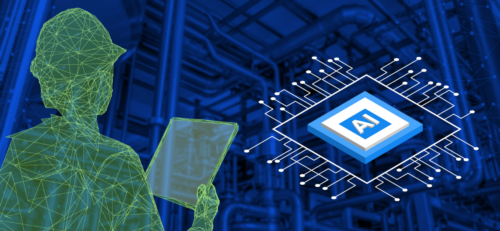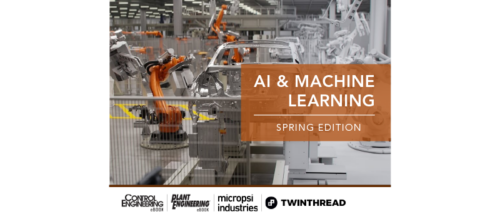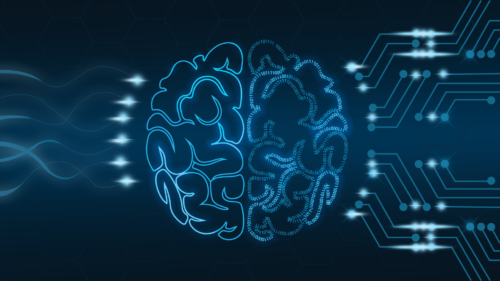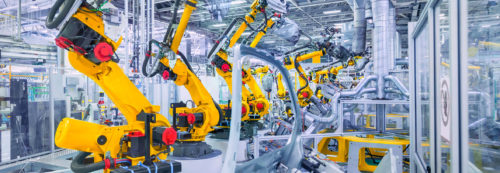What 3rd generation AI for asset performance and process optimization will look like
It’s time to tackle the “known unknowns”
Every decade or so, technology makes dramatic shifts that become the new platforms on which application technology is built. We saw it in computing going from mainframes to minis, to workstations, to PCs, to laptops, to tablets, to cloud & virtual machines.
Artificial intelligence (AI) is no different. AI has moved from 1st Generation shallow learning and handcrafted features to 2nd Generation deep learning, which has been effective at learning patterns. This is where the industrial world has been in terms of prediction. If you have not defined the pattern, you are not going to catch the unknown unknowns. We have now entered the 3rd Generation of AI which is machine reasoning-driven – where the machine can interpret, even if it has not been defined.
3rd generation solutions
With more than 50 years of experience in providing innovation in industrial insight, the Symphony AzimaAI team has been busy working to catch the crest of the wave as we enter this 3rd Generation of AI. Two recent product introductions that have already been proven at customers around the world include APM 360 & Performance 360.
APM 360 is a cloud-based asset performance management (APM) solution that covers overall asset health, real-time prescriptive monitoring and predictive maintenance. But unlike other APM solutions, it drives more value by recommending specific corrective actions — accurately and before the onset of failure. The solution leverages IIoT & machine-learning based on artificial intelligence to detect anomalies and consider complex, dynamic behavioral machinery patterns and contextual data relating to the manufacturing process at large.
Differentiators from legacy asset performance management systems include the following:
From process & low frequency vibration data to process & high frequency vibration data: Symphony AzimaAI (SIAI) has built a technology base of high-frequency vibration collection and predictive analysis for over 30 years. Integration with 10khz+ vibration data produces a more accurate AI model for prediction.
From high false positives rates to low false positive rates with AI & FMEA: Traditional APM systems based upon pattern-recognition routines are known to have high rate of failures, constantly crying wolf. APM 360’s AI-based anomaly engine looks for anomalies. Then the Failure Model Effects & Analysis (FMEA) engine and SIAI’s propriety scoring know-how acts as a double filter to ensure no spurious anomalies.
From diagnostic flags to automated apparent cause analysis: APM 360 moves from an industry-standard macro-level diagnostics flags to detailed micro-level diagnostics assessment that provides more actionable intelligence to users. Diagnostic flags generalize over specific aspects of a problem. For example, it could indicate a problem with the compressor cooling system. On the other hand, APM 360 has a sophisticated apparent cause engine that goes down to the root of the problem. It will pinpoint to the specific valve that is constricting flow and therefore leading to cooling system issues.
Figure 1 shows APM 360’s approach in identifying subtle issues with the cooling system behind chronic vibrations in a centrifugal compressor.
Beyond fault detection
Heretofore, systems have looked for known fault signatures and run analytics to do pattern matching. In case of no match, these systems do not raise defects. Unfortunately, this does not mean that a defect is not there. APM 360 AI models look for deviations from normal operating behavior and use both supervised and unsupervised learning models to detect and diagnose “unknown unknowns.”
Our process health and optimization solution is for the process industries, including petrochemical, pharma, food & beverage and power generation It combines process condition insights, performance metrics, and process history. Performance 360 uses IIOT & carefully curated artificial intelligence and deep learning technologies to predict how a process will perform in the future, while identifying potential process disruptions, quality issues, and trip conditions. And, it provides this information with enough time for you to proactively act to avoid process trips, lost batches, decreased quality, and lost revenue due to decreased yield. Differentiators from legacy process management systems include the following:
From time consuming process modeling to an AI driven data model: Instead of large teams taking 6 months to get specific computations to run online, Process 360 templates put processes online in weeks. Physics-based models also require training and retraining based upon different machines conditions. Performance 360 adapts to the dynamics of the process using our AI engine on a continual basis. Time to value is rapid.
From KPI trending to process health and anomaly detection: With KPIs, efficiencies of a compressor, for example, are defined by trends to see if it is going out of limits. Performance 360’s anomaly detection captures the interdependence of multiple events happening and highlights anomalies even if they have been previously unknown. If you merely trend the data, it appears normal vs. Performance 360 where too-subtle-to-see deviations/anomalies can be found.
From static, rules-based advice to dynamic, AI driven optimizers: Rule-based expert systems based upon what is set up can quickly run out of efficacy. Performance 360 AI driven optimizers are live and continuously adapt to any change in process condition. Refer to Figure 2 for an illustrative example of a real-world grinding mill circuit where a controller based on a non-adaptive process model could not achieve target throughput once ore properties changed. The situation changed dramatically for the better with an AI-based adaptive model optimizer.
From empirical models/rules to supervised and unsupervised AI (unknown unknowns: Models are typically trained to find a range of known conditions or process faults. This operates very well within its defined objectives and training window. The Performance 360 AI model continuously learns and separates unknown unknown operating zones from known operating zones and highlights it to the operator with tangible advice.
Where from here?
The 2030s will see the 4th Generation AI with machines that are learning to learn and that will dynamically accumulate new knowledge & skills. By the 2040s, 5th Generation AI will see imagination machines that are no longer reliant on humans to learn. We already saw this with DeepMind’s AlphaGo Zero that beat the AlphaGo 100 to 0 as it learned on its own and had no human bias. Think about what this will mean to asset and plant performance.
Do you have experience and expertise with the topics mentioned in this content? You should consider contributing to our CFE Media editorial team and getting the recognition you and your company deserve. Click here to start this process.





